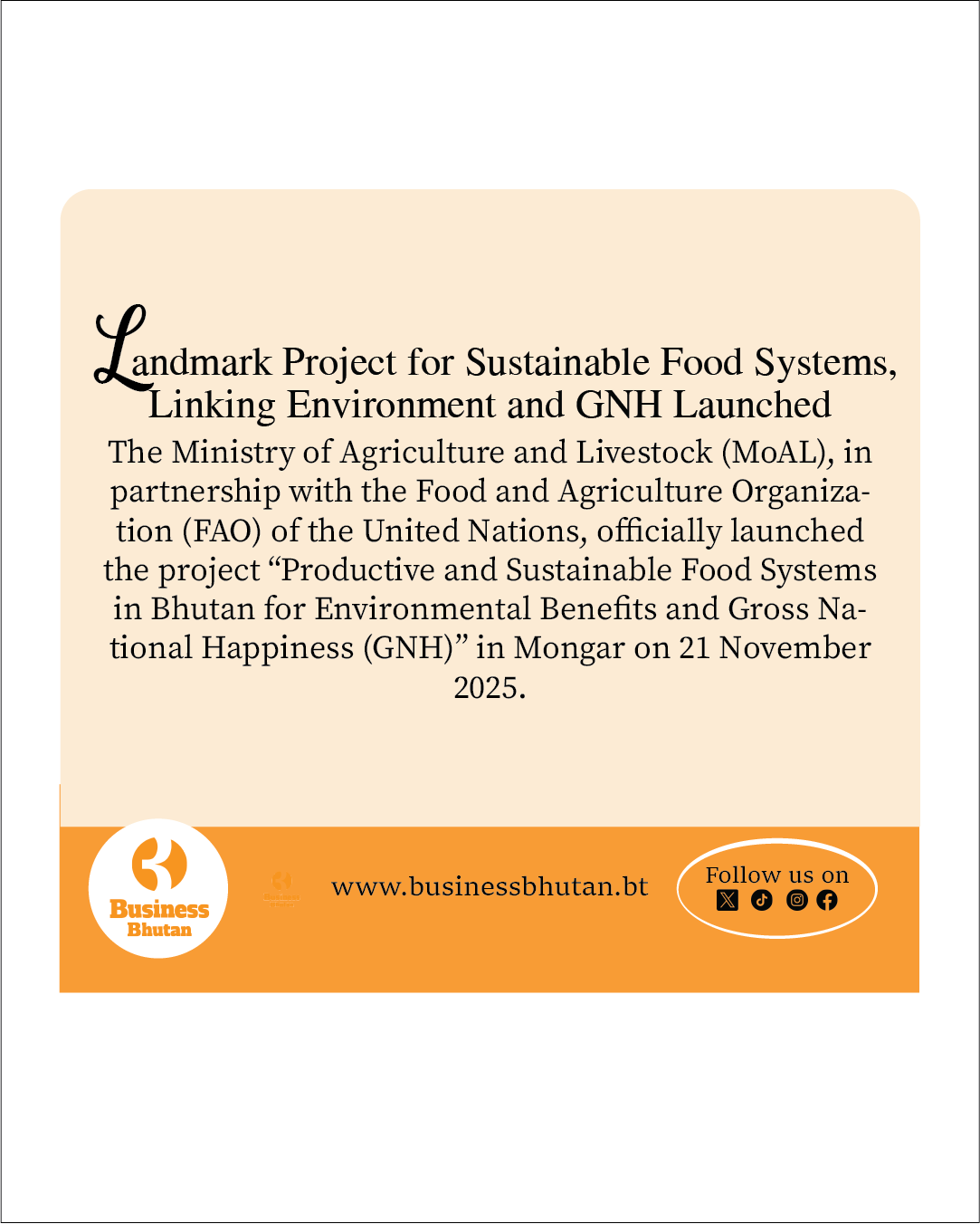The government has earmarked Nu 31.5 million for the third-child incentive program and Nu 263 million for the Rural Life Insurance Scheme in the Financial Year 2025–2026, both funds allocated under the General Reserves. While the Opposition Party has expressed support for these social initiatives, they have raised serious concerns regarding the apparent lack of rigorous research, planning, and comprehensive documentation underpinning these budgetary allocations.
During a press conference held on July b15, 2025, Gangzur-Minji MP Loday Tsheten critically questioned the government’s rationale and methodology for determining these budget figures, emphasizing the absence of evidence-based justification.
“We need transparent and detailed information to make informed decisions,” MP Tsheten stated. “When new policy initiatives are proposed, they must first undergo thorough discussion at the Cabinet level and subsequently be presented to Parliament with supporting data and clear documentation.”
While the government maintains that the third-child incentive policy was deliberated and approved at the Cabinet level, the Opposition contends that the proposal was never formally presented to Parliament with the requisite comprehensive documentation. This lack of proper submission has, according to the Opposition, undermined the Parliament’s ability to conduct a thorough review and provide informed approval of the associated budget allocation. Without detailed policy papers, supporting data, and financial analyses, the legislative body is effectively deprived of the transparency and evidence necessary to evaluate the policy’s rationale, projected impact, and fiscal implications. Consequently, the Opposition argues that this procedural omission raises concerns about accountability and governance standards in the budget approval process.
MP Tseten underscored that sound budget decisions must be grounded in clear policy analysis and robust financial modeling. “Critical data points are missing, including current birth rates, projections of third-child births, and anticipated uptake rates of the scheme,” he noted.
He added, “There is no working paper or detailed explanation outlining how the Nu 31.5 million allocation was calculated. We require disaggregated data, particularly on families with a third child, to understand the scope and scale of this initiative.”
MP Tsheten further highlighted a lack of clarity regarding the financial mechanics of the third-child incentive policy. “There is no transparent calculation of the actual incentive amounts to be disbursed to parents. Moreover, no research appears to have been conducted on the broader socio-economic implications of these incentives,” he observed.
The absence of formal documentation raised additional concerns. “When Cabinet approves budget allocations, a detailed working paper providing comprehensive information must accompany the decision. This critical document is missing in the case of the third-child incentive policy,” the MP emphasized. “We must understand how the government arrived at the Nu 31.5 million figure.”
The Economic and Finance Committee has reportedly engaged in discussions on the matter. “We have requested more information since the government has already finalized certain budgetary allocations,” the MP added. “It is imperative that we know the basis for allocating Nu 31.5 million to this scheme.”
The Opposition insists that policy initiatives should be sustainable and underpinned by rigorous research. “We are concerned that the government may have set the figures without following established due process,” MP Tsheten warned. “Assigning budgetary numbers without proper documentation and analysis is not a good governance practice.”
Similar concerns were voiced regarding the Rural Life Insurance Scheme. “The situation is analogous,” the MP stated. “While Nu 263 million has been allocated, there is no clear directive on whether the insurance coverage will be increased from the current Nu 30,000 to Nu 100,000, as speculated.”
He also pointed out a lack of clarity surrounding the scheme’s implementation mechanisms. “It remains unclear how the government plans to subsidize premiums, whether through the Royal Insurance Corporation of Bhutan Limited (RICBL) or direct government funding,” he noted. “Additionally, the premium rates that rural residents will be required to pay have not been specified.”
MP Tsheten raised equity concerns, noting that the scheme appears to target only rural populations. “If the scheme excludes urban poor communities, this raises questions of fairness,” he said. “Although urban poverty might be less visible, residents in these areas also deserve access to affordable insurance coverage.”
The MP concluded, “Both the third-child incentive and the Rural Life Insurance schemes must be founded on comprehensive research and clearly articulated implementation plans. Without proper groundwork, there is a high risk of inefficient use of public funds and failure to meet the needs of the intended beneficiaries.”
Meanwhile, the third-child incentive policy is a key component of the ruling government’s electoral commitment to address Bhutan’s demographic challenges, specifically the country’s declining fertility rate. Currently, Bhutan’s fertility rate stands at 1.845 births per woman, significantly below the replacement level of 2.07 births needed to maintain a stable population over time. This demographic decline poses potential long-term socio-economic challenges, including a shrinking workforce, increased dependency ratios, and pressure on social support systems.
The government’s introduction of the third-child incentive seeks to encourage families to have more children, thereby supporting efforts to stabilize and eventually increase the population growth rate. This policy aligns with broader national goals of ensuring sustainable population dynamics that can underpin future economic growth, social welfare, and labor market stability. By incentivizing larger families, the government aims to mitigate the risks associated with an aging population and labor shortages, while also fostering a supportive environment for child-rearing through complementary social and fiscal measures.
During the recent parliamentary session, Finance Minister Lyonpo Lekey Dorji elaborated that the policy is integral to broader demographic strategies designed to encourage population growth. “A replacement fertility rate of at least 2.2 is required,” the Minister explained. “Supporting this effort, the Ministry of Health, with assistance from JICA and the World Bank, is providing Nu 1,500 per hospital visit to women in rural areas.”
The government also plans to introduce expanded tax deductions linked to the number of children in a family. These will include Nu 1,000 for the first child, Nu 1,250 for the second, Nu 5,000 for the third, and Nu 10,000 for each subsequent child. Additionally, parents of children with disabilities will be eligible for an annual tax deduction of Nu 40,000.
Beyond fiscal incentives, the Finance Minister outlined plans to improve childcare services and support working parents. Stipend rates in schools offering three meals a day will be increased, aiming to lower the cost of raising children and incentivize larger families.
Further, Lyonpo Dorji announced the establishment of additional Early Childhood Care and Development (ECCD) centers and crèche facilities designed to assist working parents, particularly mothers, by providing childcare options following maternity leave.
Nidup Lhamo from Thimphu




![Fresh Beginnings: Pasakha Vendors Gear Up for New Vegetable Market - Duplicate - [#16963] Fresh Beginnings: Pasakha Vendors Gear Up for New Vegetable Market - Duplicate - [#16963]](https://businessbhutan.bt/wp-content/uploads/2025/11/Asset-200.png)











